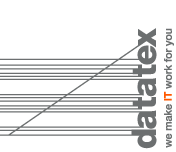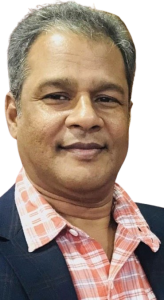 ZUG, Switzerland — January 23, 2024 — Bhaskar Ranjan Saha is a Commerce Postgraduate from the University of Chittagong, Bangladesh. He has more than 33 years of hands-on working experience. Since 1990, Bhaskar has worked for a diversified group of companies, including 100% export-oriented textile and apparel manufacturing. Starting as a Management Trainee, he has worked his way up to the position of Chief Financial and Operations Officer. As a Freelance Consultant and Industry Domain Expert, Bhaskar is working to establish an Integrated Business Process Management System & solution in the Bangladesh Textiles and Apparel Manufacturing Industry. His goal is to enhance productivity and efficiency, particularly management efficiency, by promoting a collaborative approach to management and discouraging a silo mentality. He has also initiated the ‘BHASKAR ACCOUNTING LAB’ to extract, explore, and accelerate business-finance operations excellence.
ZUG, Switzerland — January 23, 2024 — Bhaskar Ranjan Saha is a Commerce Postgraduate from the University of Chittagong, Bangladesh. He has more than 33 years of hands-on working experience. Since 1990, Bhaskar has worked for a diversified group of companies, including 100% export-oriented textile and apparel manufacturing. Starting as a Management Trainee, he has worked his way up to the position of Chief Financial and Operations Officer. As a Freelance Consultant and Industry Domain Expert, Bhaskar is working to establish an Integrated Business Process Management System & solution in the Bangladesh Textiles and Apparel Manufacturing Industry. His goal is to enhance productivity and efficiency, particularly management efficiency, by promoting a collaborative approach to management and discouraging a silo mentality. He has also initiated the ‘BHASKAR ACCOUNTING LAB’ to extract, explore, and accelerate business-finance operations excellence.
After China, Bangladesh is now the world’s second-largest textile and apparel-producing country. The export sector more than doubled in the last decade, and some of the world’s leading fast fashion brands, such as H&M, Zara, Levi’s, Gap, Puma, and Abercrombie & Fitch, have chosen Bangladesh as a manufacturing base. This success can only be best governed by companies with a proper IT ecosystem. From the perspective of technological innovation, artificial intelligence, and IT management of industrial production, what are the essential issues at stake today and the points that would need more attention from Bangladeshi companies?

Without any doubt, Bangladesh is positioning itself second in command in the world ready-made garments (RMG) sourcing business to many world-class clothing retail brands. The country is known for its sustainable and responsible manufacturing practices, LEED-certified manufacturing hub for RMG as a China plus one housing 206 nos, with more than 500 factories obtaining LEED certificates.
Bangladesh’s industry has set its target to achieve USD 100 billion in exporting RMG by 2030. During the last 37 years, it has overcome endless challenges, developed hands-on experiences, and successfully adopted the demand for sustainability, circularity, and digitalization to stay ahead of the competition. The manufacturing companies in Bangladesh’s Textiles and Apparel Industry, with its business associations, the government, professional and educational institutions, have recognized the necessity of incorporating current technological innovations such as Business Application Software, Business Intelligence, Artificial Intelligence, and Industry 4.0.
From an IT and IoT perspective, the current demand is to manage production and business processes using IT-based methods. The industry owners and stakeholders are working on it, phase by phase, for digital management transformation aiming to have as much as possible less human intervention in transaction processing and generating data, information, and reports for real-time business-finance performance and its continuous improvement.
The textile industry is focusing on several key areas to improve its productivity and efficiency. These include integrating people, processes, and systems, re-skilling and up-skilling employees, planning and monitoring to reduce lead times, minimizing wastage, investing in appropriate IT systems to integrate the entire value chain from development to delivery, and streamlining business and finance operations across the company. From the sample room to the board room, the aim is to create a fiber-to-garments process that is seamless and effective.
In digital transformation, the availability of industry-specific skilled services is crucial. Currently, the industry is striving to establish trust in the system and service performance, both in the short and long term. This is done by ensuring a visible contribution to its core business, finance, and investment, which integrates all the value chain and supply chain functions.
Bangladesh is now the most attractive nation for global fast fashion giants, which continue to invest in the country. Why? For what reasons do multinationals in the industry increasingly choose Bangladesh as a production hub rather than other nations with cheap labor?
The people in this region, both male and female, have the necessary skills to produce cotton-based clothing at a competitive price. Basic clothing represents a necessity for daily life, generating regular demand. Most major global retailers rely heavily on Bangladesh’s garment manufacturing industry, and this is expected to continue due to the current and future global socio-economic conditions.
The country’s clothing industry owners continuously invest in sustainability and labor rights improvements at the workplace. The global brands are highly satisfied with the advancement of performance and investments in workplace safety and workers’ livelihood. They have reinforced their sourcing needs from Bangladesh by visiting manufacturing locations and observing government attention to industry-specific initiatives. In addition, the country’s industry focuses on diversifying in non-cotton-based products, showcasing its innovation, investing in its market expansion and backward linkage. Bangladesh is looking to be an all-in-one location for services ranging from raw materials to yarn, fabrics, processing, and printing.
The knitting and denim industry is one of the most established, while the woven sector is improving steadily. Global retailers are trying their best to facilitate the establishment of one China Plus sourcing hub to stay competitive in their sustainability efforts. Considering the current and future geopolitical movements in the world and the availability of a demographic dividend in the workforce for the next 25 years, Bangladesh is identified as a promising location. The workforce in Bangladesh is highly adaptable to meet the specific skill requirements and process improvements needed in the workplace.
What types of products and processing most characterize the Bangladeshi textile industry? What is the most manufactured product, and in which textile sector is Bangladesh a leader?
Bangladesh’s Textile and apparel Industries are characterized by the production of cotton-based products, representing 70% of exported garments. The ratio of the garments in the export basket is about 55:45, meaning that knitted products are 55% and woven are 45% in terms of export value. Bangladesh Denim production and export is highly positioned in the world market, offering high-quality denim fabrics and clothing. Bangladesh Garments Export is led by knitted and denim products with about 100% backward linkage in the country’s supply chain.
In the recent fiscal year that ended on June 30, 2023, it exhibited that the main exported garment products in terms of export values are:
- 40% Trousers,
- 28% T-shirts and knitted shirts,
- 16% Sweaters,
- 10% Shirt and blouses,
- 6% Underwear.
Bangladesh’s Textile and Apparel Industry is growing rapidly, particularly in the production of man-made fiber products and processes. This industry continues to maintain its highly competitive advantages in producing and exporting cotton-based basic garments, while also focusing on creating value-added products. As a result, buyers are increasingly placing orders for these products, which is further facilitating their production and supply.
Product diversification and innovation are advancing daily due to infrastructure investments for design studios, laboratories, innovation hubs, research and development centers within companies, and sector associations aiming to build knowledge for the common good. The companies recognize the need for digitalization to stay competitive in the next generation of business. They are also committing to finance and invest in the textiles and apparel manufacturing industry in Bangladesh while keeping a continuous focus on product diversity and skill development in the workplace.
Posted: January 23, 2024
Source: Datatex AG — Edited By Jiayi Ye
